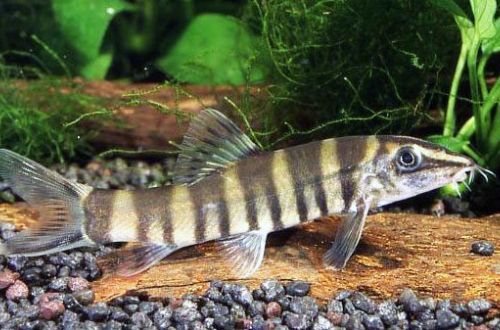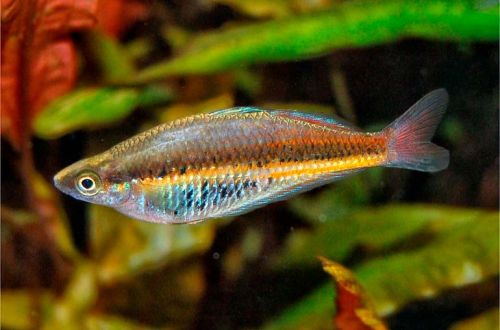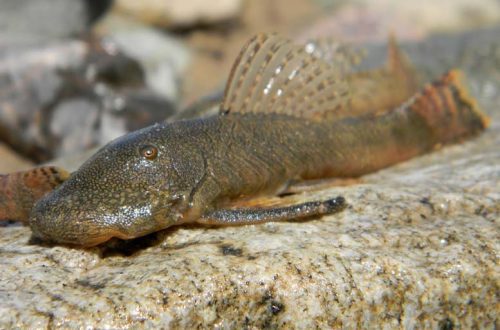
Chinese Bocilia
Chinese Char or Chinese Bocilia, scientific name Sinibotia robusta, belongs to the family Cobitidae (Loaches). Easy to keep, compatible with other species and can be a great addition to the existing tropical fish community in your tank.

Contents
Habitat
It comes from the territory of South China from the provinces of Guangxi and Guangdong – the most densely populated and industrialized. It lives in the basins of the Gunasi and Xijiang rivers. Occurs in areas with moderate to low flow with clear water and rocky substrate. Large wild populations have survived mainly in the upper reaches of the rivers, since the rest is heavily polluted.
Brief information:
- The volume of the aquarium – from 100 liters.
- Temperature – 20-25°C
- Value pH — 6.5–8.0
- Water hardness – soft to medium hard (2-15 dGH)
- Substrate type – sandy or fine gravel
- Lighting – subdued
- Brackish water – no
- Water movement – moderate / weak
- The size of the fish is 9–10 cm.
- Nutrition – any drowning
- Temperament – peaceful
- Content in a group of at least 3–4 individuals
Description
Adult individuals reach a length of about 9–10 cm. Sexual dimorphism is weakly expressed, females are somewhat larger than males. The body is elongated, the head is pointed, there are several sensitive antennae near the mouth, with the help of which the fish searches for food in the thickness of the soil. The body pattern consists of alternating vertical stripes of yellow and brown.
Food
Refers to carnivorous species. In nature, it feeds on aquatic insects and their larvae, crustaceans, mollusks and small fish. In a home aquarium, it is not very picky, it will accept all types of dry, frozen and live food.
Maintenance and care, arrangement of the aquarium
The optimal size of the aquarium for a group of 3-4 fish starts from 100 liters. The choice of design is arbitrary, subject to the following conditions: soft substrate and the presence of shelters. It is advisable to use fine gravel or sandy soil, several snags, heaps of stones that form crevices and grottoes. Shelters can also be made from decorative objects, for example, imitations of sunken ships, castles, etc. The lighting level is muted, plants are selected from among shade-loving species. They are planted in pots to avoid accidental digging by fish.
The successful maintenance of Chinese Bocilia depends mainly on the hydrochemical composition and quality of the water. It is necessary to maintain the recommended pH and dGH parameters, a high level of dissolved oxygen, remove organic waste in a timely manner and replace part of the water (30–50% of the volume) with fresh water weekly.
Behavior and Compatibility
Peaceful calm look, leads a hidden lifestyle. Will spend a lot of time in the shade of plants, in shelters. Compatible with many popular fish that can live in similar water conditions. The content in the group is at least 3-4 individuals. It is noted that with a smaller number, the behavior of the Chinese charr can be traced aggression towards the neighbors in the aquarium.
Breeding / breeding
In the natural environment, the mating season for this species of fish coincides with the rainy season and is accompanied by long migrations to flooded areas of coastal forests. Thus, spawning is stimulated by periodic changes in the external environment, which are difficult to recreate at home, so breeding in an aquarium is difficult. The fry are sold from commercial fish farms, where hormonal injections are used to breed loaches.
Fish diseases
By their nature, non-ornamental fish species that are close to their wild relatives are quite hardy, have high immunity and resistance to various diseases. Health problems can be the result of inappropriate conditions, so before starting treatment, check the quality and parameters of the water. If necessary, bring all values back to normal and only then begin treatment, if necessary. Read more about diseases, their symptoms and methods of treatment in the section “Diseases of aquarium fish”.





